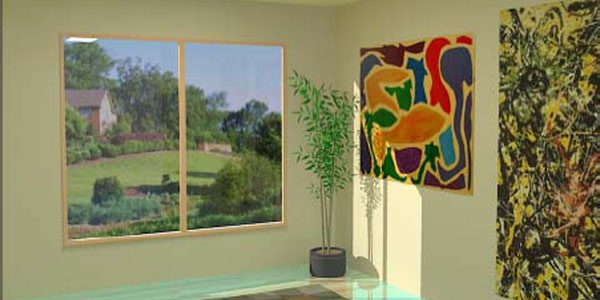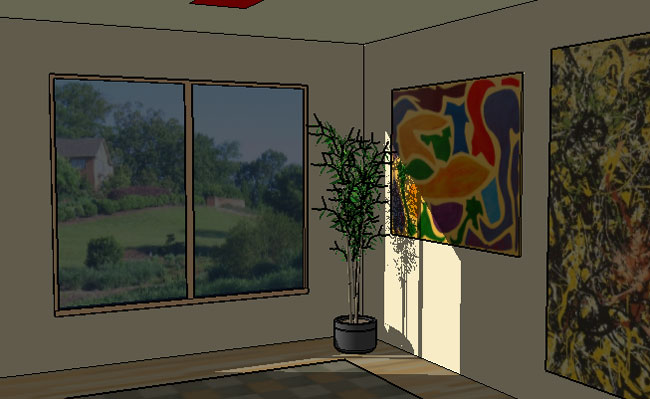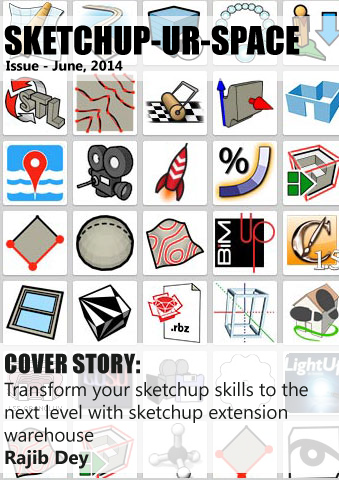Sketchup Resources
- SKP for iphone/ipad
- SKP for terrain modeling
- Pool Water In Vray Sketchup
- Rendering Optimization In Vray Sketchup
- Background Modification In sketchup
- Grass Making with sketchup fur plugin
- Landscape designing in
Sketchup - Apply styles with sketchup
- Bedroom Making with sketchup
- Review of Rendering Software
- Enhancing rendering for 3d modeling
- The combination of sketchup &
BIM - Exterior Night Scene rendering with vray
Author : Bonni Roskes
Rendering for Free, Using Kerkythea

Take a SketchUp model of a room with a window, in which shadows are displayed and sunlight is streaming in. SketchUp's cartoon-like interface is very clear, but makes the room look unrealistic. Also, the overall look is very dark because SketchUp has no defined lights.
 |
A rendering application enables you to produce a more realistic view, by taking away edges, adding lights, and changing material properties.
 |
There are numerous rendering applications out there, many of which are reasonably priced (a few are priced quite high). For this project I chose Kerkythea for the simple reason that it's free. (Some other renderers are now, or will be, free for teachers and instructors. I will write about those in future projects.) Kerkythea is the precursor to the commercial product Thea Render. So while still available for free, Kerkythea is no longer actively supported, though there are still user forums and instructional materials out there. It's a great application for getting your feet wet with rendering, and once you get a feel for it, you could explore more of its many option, or look into other rendering applications.
Keep in mind that rendering can take a long time, particularly when you add properties to materials such as reflectivity, base colors, etc. So leave some time for this project, or at least keep some interesting reading on hand (or go grab some coffee) when your computer is processing for long stretches!
The idea for this project came from a useful book I recently reviewed: SketchUp 7.1 for Architectural Visualization, by Robin de Jongh.
Robin introduces several ways you can enhance your SketchUp model views, all of which take advantage of free software (such as GIMP and Virtual Dub), freely available entourage objects such as trees, furniture, and people, and freely available textures and materials.
My full review of this book is available on my blog (www.3dvinci.blogspot.com), at the entry dated May 27,2010.
For this project, it helps to have some basic knowledge of Google SketchUp (though detailed instructions are provided). In particular, it's important to know how to zoom, orbit, and pan the view. If you need more information on how to get started, and a description of some basic tools, please read 3DVinci's Getting Started Guide (PDF).
PC users: go to http://www.3dvinci.net/SketchUp_Intro_PC.pdf.
Mac users: go to http://www.3dvinci.net/SketchUp_Intro_MAC.pdf.
| Next |


